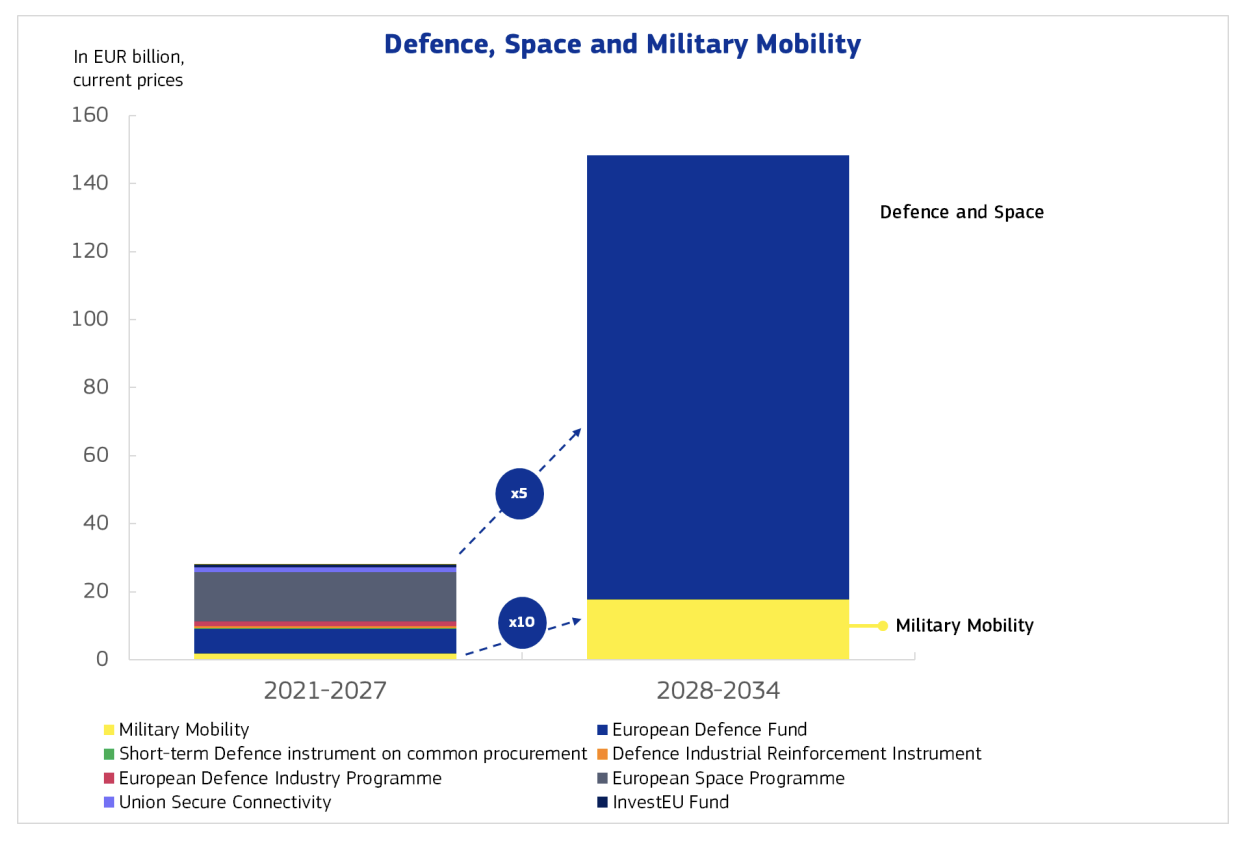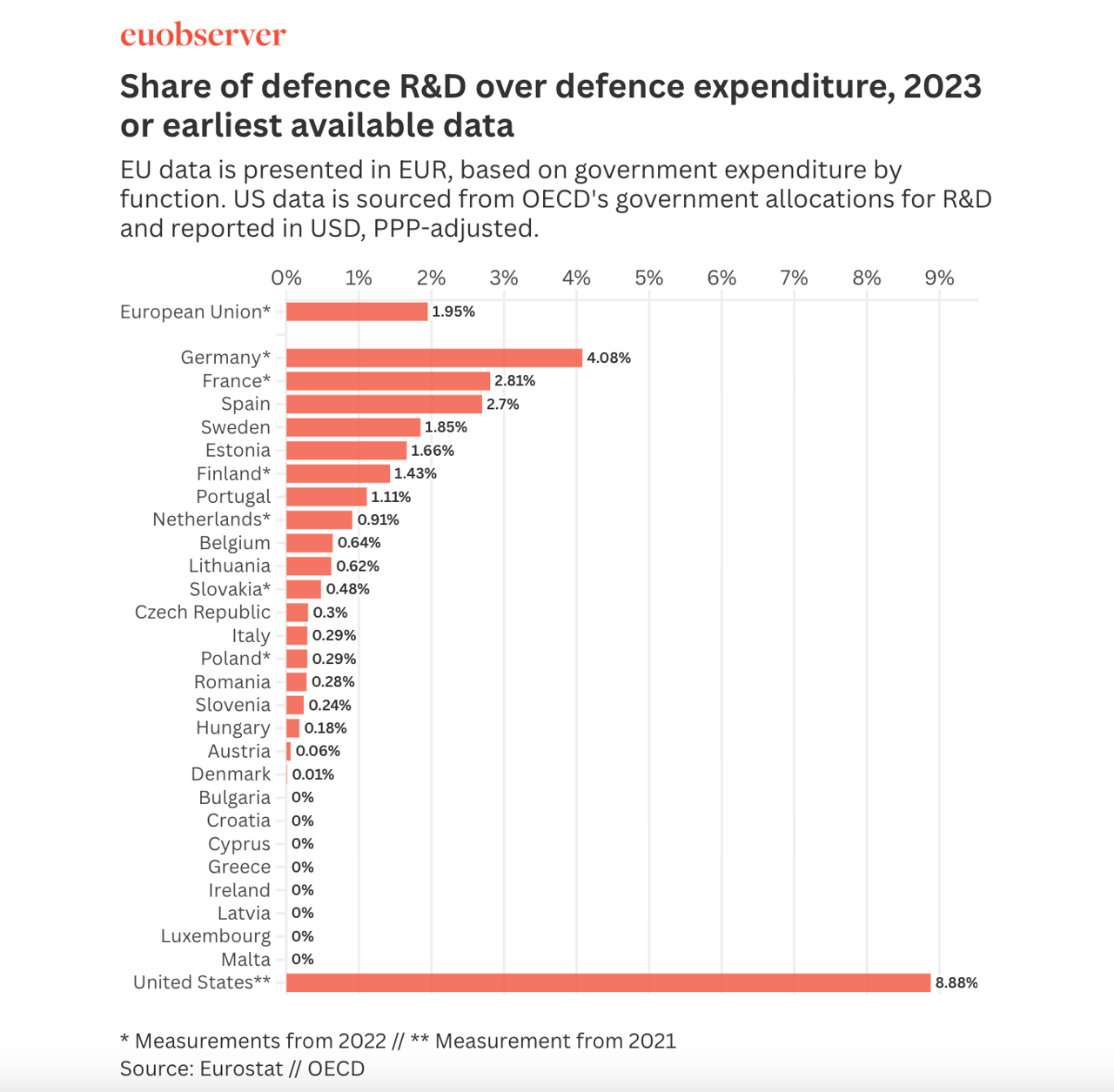Devil in detail of new EU defence splurge
“The future EU budget must give new impetus to the creation of a true European Defence Union,” reads the €2 trillion long-term budget (2028-2034) proposal presented by European Commission this week.
To do so, the Brussels-executive has unveiled a fund to boost Europe’s defence capabilities and space infrastructure, alongside funds dedicated to military mobility, and voluntary schemes under national and regional envelopes (one of the novelties in the new budget).
But questions remain over eligibility criteria, how quickly funds can be deployed, and whether it will match the urgency of Europe’s evolving security needs.
It is estimated that the €131bn allocated for defence and security under the mega Competitiveness Fund represents a fivefold increase compared to the previous allocation in the current budget — making it a clear signal of Europe’s new strategic priorities after the war in Ukraine and growing scepticism about US reliability in Nato.
But the risk for potential loopholes remains, especially given that defence and arms experts remain a national competence.
The defence and space fund merges existing programmes to grant flexibility, including the defence fund (EDF), industrial strategy (EDIS), industry programme (EDIP), procurement act (EDIRPA), and innovation scheme (EUDIS).
“The idea is to meet the expectation of a number of member states to develop together flagship projects, namely projects of a large scale that no member state on its own would be able to develop,” an EU official told journalists on Thursday (17 July).

But how the “European preference” would be applied (including eligibility criteria for member states and other details) remains unclear.
“We're trying to strike that balance between our requirements in terms of European sovereignty and also being open to non-EU participation,” the official explained, adding that, in the case of acquisitions, the EU was willing to accept systems that integrate foreign components.
In principle, the new defence fund will build on SAFE loans to member states, which requires 65 percent of components to come from the EU, European Economic Area countries, Switzerland, or Ukraine. The UK has a security partnership with the EU, but it is not directly involved in SAFE.
Under a new budget architecture based on national and regional plans, member states will also be able to identify defence-related projects as well as dual-use infrastructure investments to request EU funds. Eastern border regions are expected to receive preferential treatment.
"They are on the frontline of Europe's security and next MFF [Multiannual Financial Framework] will strengthen resilience where it's most needed," EU defence commissioner Andrius Kubilius said on X.
Horizon, the EU’s flagship research programme, will also focus on the development of dual-use technologies, such as drones, that can be used for both civilian and military purposes.
“It cannot be either procurement today or R&D. It needs to be both,” the EU official said.
Defence R&D funding in the EU reached €3.9bn in 2022, according to Eurostat. However, according to the Dragi report, next-generation defence systems will require massive R&D investment.

Meanwhile, the commission proposal also foresees €18bn investments in military mobility, alongside civilian infrastructure, through the so-called Connecting Europe Facility, which the commission says is almost 10 times greater than the amount currently allocated.
And it maintains the European Peace Facility, with a proposal of €30.5bn, as an off-budget instrument aimed at funding defence capabilities (also outside the EU), despite the sour experience of payments to Ukraine being blocked by Hungary due to the need for unanimity.
In what seems like a controversial move, the commission has also proposed to increase streams of revenues for the EU budget with five new taxes, including a fixed annual charge for big companies operating in the EU, with an annual net turnover above €100m.
The turnovers of some of the biggest defence companies in Europe, including Airbus, Leonardo, Thales, Rheinmetall, actually run into billions.
This year, we turn 25 and are looking for 2,500 new supporting members to take their stake in EU democracy. A functioning EU relies on a well-informed public – you.
Author Bio
Elena is EUobserver's editor-in-chief. She is from Spain and has studied journalism and new media in Spanish and Belgian universities. Previously she worked on European affairs at VoteWatch Europe and the Spanish news agency EFE.
Related articles
Tags
Author Bio
Elena is EUobserver's editor-in-chief. She is from Spain and has studied journalism and new media in Spanish and Belgian universities. Previously she worked on European affairs at VoteWatch Europe and the Spanish news agency EFE.